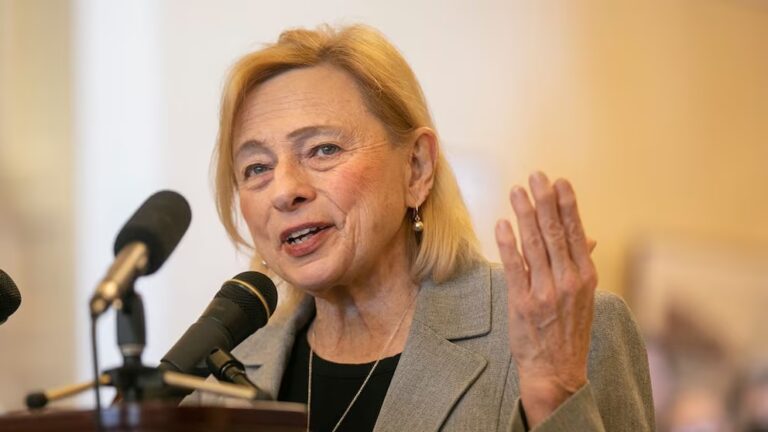The chain of events set off by an unresponsive plane that eventually crashed Sunday in Virginia continues to raise questions about what happened on board and how the incident was handled.
Six fighter jets were scrambled on the afternoon of June 4 to try to intercept the private Cessna jet, originally on a flight from Tennessee to New York, as it encroached on restricted airspace around Washington, D.C. The plane eventually went down in a mountainous area of Virginia, killing all four people on board.
But because the fighter jets weren't launched until long after the plane first went unresponsive, and after it turned around in New York without landing, it's unclear why NORAD waited to intercept the plane until it was about 20 miles northeast of the nation's capital.
"Why would they not be so alarmed at the moment it did a 180-degree return?" ABC News contributor and aviation analyst said. "That's when they should have scrambled because they would have been able to see very clearly that it was headed back in the same direction and right north of Washington, D.C. So, I'm quite concerned here."
MORE: F-16s scrambled 1.5 hours after contact lost with unresponsive jet that veered to DC
White House spokesman John Kirby declined to tell ABC News Chief White House Correspondent Mary Bruce on Tuesday whether he thought it was okay for 90 minutes to lapse between the time the Cessna jet was unresponsive to it being intercepted by F-16s.
"[Department of Defense] will take a look at the process," Kirby said. Kirby added the response was done in "textbook fashion" but DOD will determine if anything should have been done differently.
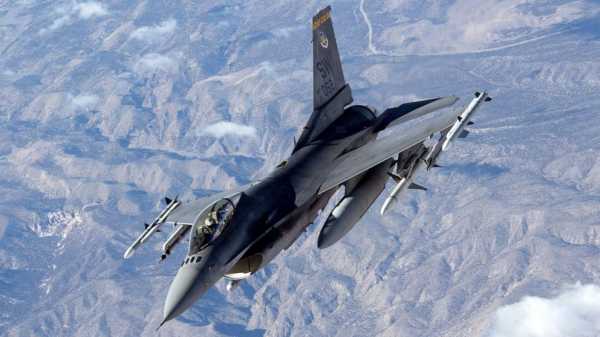
This file photo released by the US Air Force January 31, 2006, shows an F-16 Fighting Falcon from the 20th Fighter Wing, Shaw Air Force Base, South Carolina.Kevin Gruenwald/US AIR FORCE/AFP via Getty Image
The National Transportation Safety Board (NTSB) has begun an investigation into exactly what happened.
Here's a timeline of the plane's path, and the military response that led to a sonic booms over the D.C. region and along the East Coast. All times are Eastern.
Flight takes off from Tennessee
At 1:13 p.m. the plane departed from Elizabethton Municipal Airport in Tennessee bound for Long Island MacArthur Airport in New York, according to the NTSB. Three passengers and the pilot were on board.
Shortly after take-off, at approximately 1:28 p.m., air traffic controllers lost contact with the jet and repeatedly called out to the plane but received no response, according to the Federal Aviation Administration (FAA).
Defense and homeland security officials were notified of the situation eight minutes after controllers lost contact with the plane, the agency said.
Air traffic controllers began warning pilots as early as 1:50 p.m. that an unresponsive plane was in the air.
Flight reaches Long Island, turns around
At approximately 2:30 p.m., the Cessna jet reached Long Island but did a 180-degree turn, changing its path to a southwestern trajectory as it flew over MacArthur Airport at a cruising altitude of 34,000 feet.
It's unclear why the plane didn't land at its intended destination, but Nance said, assuming the plane was on autopilot, it wouldn't be capable of being programmed to automatically descend.
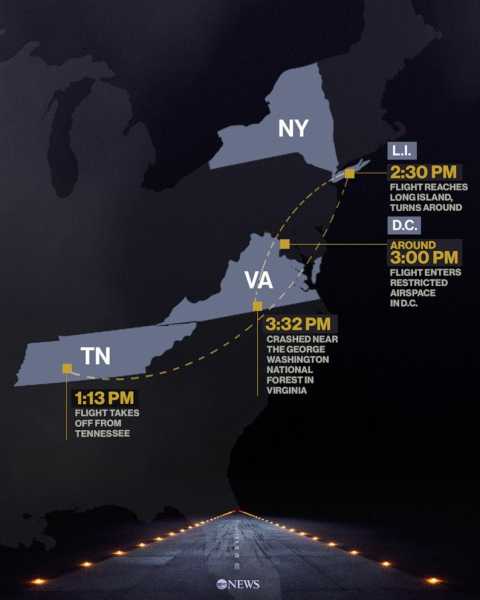
The flight path of Cessna plane that crashed in Virginia on June 4.ABC News Photo Illustration
Flight enters restricted airspace, fighter jets scramble
The exact timeline is unclear but around 3 p.m., the plane drew closer to restricted airspace over Washington, stoking increased alarm among officials.
It's at this time that NORAD, or North American Aerospace Defense Command, scrambled six F-16 fighters from three different units and bases: two from Joint Base Andrews in Maryland and the other four from Atlantic City, New Jersey, and McEntire, South Carolina.
Sonic boom heard by D.C.-area residents
Starting shortly after 3 p.m., residents across the Washington metro area began to circulate social media postings about what sounded like a loud explosion.
Door-camera footage from northern Virginia at 3:09 p.m. captured the noise of a sonic boom, which was later confirmed to be from the F-16's that were authorized to travel at supersonic speeds to catch up to the unresponsive Cessna plane.
NORAD said that two F-16s launched from Atlantic City traveling at supersonic speed created the noise.
A U.S. official defense explained to ABC News that as the F-16s traveled the region at supersonic speeds for several minutes, people would have heard the sonic boom at different locations at different times.
F-16s intercept plane
At approximately 3:20 p.m., the plane was intercepted 20 miles northeast of Reagan National Airport, according to NORAD.
A defense official said two F-16s that had taken off from Joint Base Andrews deployed flares and flew around the aircraft to try to capture the pilot's attention but received no response.
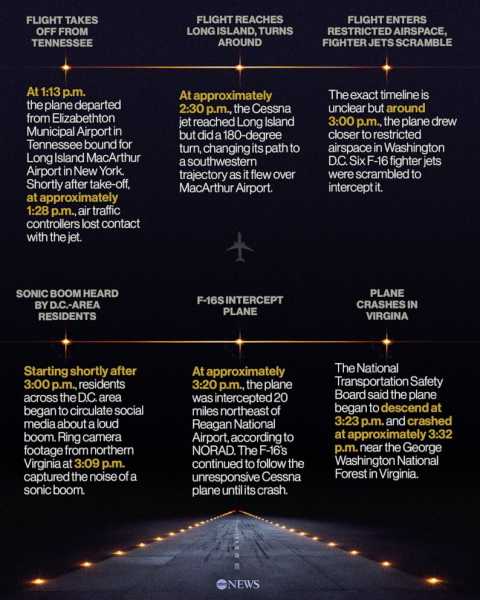
Timeline of Cessna plane crash and military response on June 4.ABC News Photo Illustration
A second U.S. official said the fighter jet pilots "visually confirmed that the Cessna pilot was unresponsive." A U.S. official told ABC News that the pilot seemed to have passed out.
Experts said it was likely hypoxia, a condition that occurs when the body loses oxygen, that caused the pilot to become unresponsive.
The F-16s continued to follow the unresponsive Cessna plane until its crash.
Plane crashes in Virginia
The NTSB said the plane began to descend at 3:23 p.m. and crashed at approximately 3:32 p.m. near the George Washington National Forest.
The flight tracking software following the plane's path also reported it going down at 3:32 p.m.
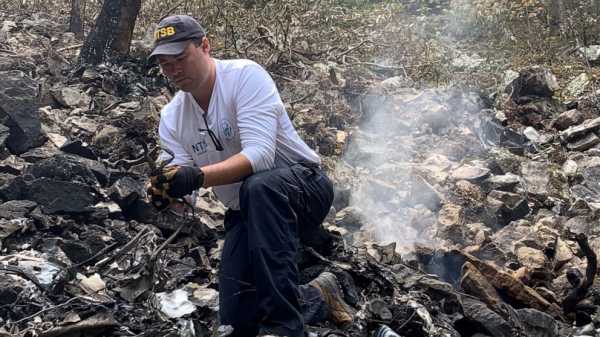
An investigator at the crash site of the Cessna in Virginia in a photo released by the National Transportation Safety Board.NTSB
The Virginia State Police said in a statement they were informed of the crash at 3:50 p.m.
According to state police, first responders were able to reach the crash site shortly before 8 p.m. No survivors were located.
Sourse: abcnews.go.com

